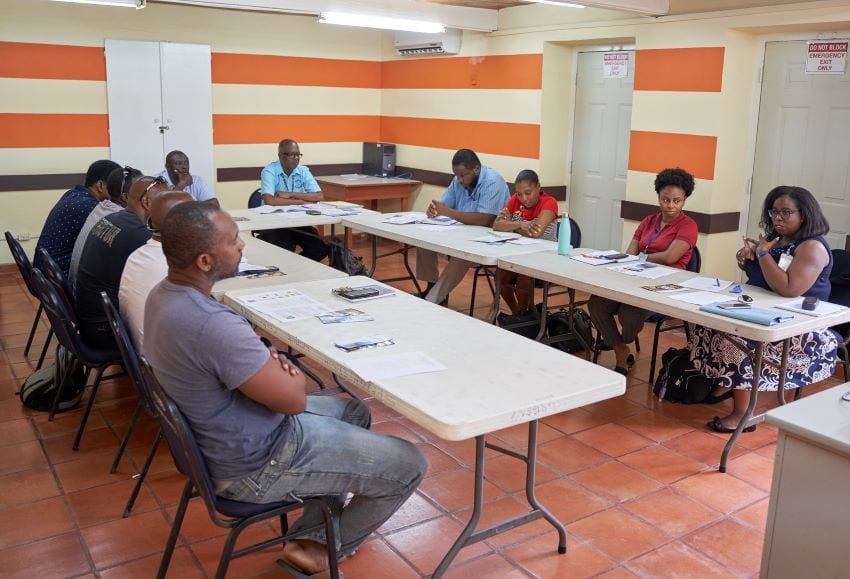
Lifeguards have raised concerns about members of the public heeding warnings to get out of the sea in the event of an impending tsunami.
This was among the issues raised as a team of lifeguards from the National Conservation Commission underwent a sensitization session and tabletop exercise conducted by the Department of Emergency Management (DEM) and members of the Technical Standing Committee on Coastal Hazards.
The training was held at the Speightstown Resource Centre in St. Peter, to mark World Tsunami Day on November 5.
The lifeguards expressed concern that members of the public, especially locals, failed to adhere to the warning of a red flag erected at beaches, which means no swimming is allowed.
And, they noted that there were many instances when they risked their own lives to save those who ignored their warnings.
They added that in the case of a tsunami, especially one that was generated locally, and for which there would be mere minutes to prepare, the challenge would be getting everyone off the beaches within a short space of time, and encouraging them to run for higher ground.
“If on average you are going to receive the message and you have at least 20 minutes before the first wave arrives, then there is no real time,” one lifeguard pointed out.
However, they explained that the lifeguard towers were outfitted with horns to allow them to communicate with beach users, and they were notified via VHF radio or telephone about any impending disasters that could affect sea conditions.
During her presentation, Programme Officer at the DEM, Gayle Drakes, outlined what a tsunami is, the causes, and the warning signs to the lifeguards.
She also highlighted the National Emergency Management System and did an overview of the National Tsunami Warning Standard Operating Procedures.
Meteorologist Bryan Murray explained how Barbados receives a tsunami warning, and the protocols that are in place to alert the public through the various agencies.
The tabletop exercise was designed to discuss the strengths and weaknesses in receiving and responding to tsunami warnings among lifeguards and other beach personnel.
It was also designed to make recommendations for enhancing national tsunami standard operating procedures, and for strengthening emergency response planning for lifeguards and other beach personnel.
